10 Faulty HDMI Cable/Port Symptoms: How to Tell if It’s Going Bad?

What To Know
- Inspect for visible damage on both the HDMI cable and ports, as physical signs like bent pins or exposed wires often indicate the need for replacement.
- Experiencing intermittent picture or sound, discoloration, or a complete lack of signal suggests a faulty HDMI cable or port; ensure it’s not an issue with remote settings or the content itself.
- If the HDMI cable fits too tightly or loosely, or if maintaining a connection requires constant adjustment, clean the port and check for shape distortions.
Our clear-cut guide will explore the tell-tale signs of HDMI trouble, from physical damage to frustrating connectivity issues, so that you can get back to your seamless viewing experience.
Quick Navigation
- 1. The Cable is Physically Damaged
- 2. The HDMI Port is Physically Damaged
- 3. Your Output Device is Unresponsive
- 4. Inconsistent Picture and/or Sound
- 5. The Picture is Discoloured and/or Unclear
- 6. The Remote and HDMI CEC Function isn’t Working
- 7. No Sound and/or Picture
- 8. Cable Does Not Seamlessly Fit into Port
- 9. The Cable Cannot Maintain a Steady Connection
- 10. Your TV and/or Cable is Old
1. The Cable is Physically Damaged
Has your cable suffered years of abuse? Has your furry companion been using the cable as their personal chew toy?
If so, then your cable might be damaged. The cable’s plastic liner could be torn, revealing the wires beneath.
It’s also a good idea to check the HDMI connector’s condition. Is the connector bent? Are some of the pins inside the connector missing or bent?

Now, turn your attention to the rubber coating connecting the cable to the connector. Is it bent, worn, or torn? This rubber coating is particularly prone to breaking if your HDMI cable is frequently bent, which can happen when you plug it into an HDMI port on a wall-mounted TV.
Damaged cables tend to have connectivity issues and may stop working altogether. So, if you notice that any part of your cable is broken, then you may have found your culprit and should consider replacing it.
2. The HDMI Port is Physically Damaged
HDMI ports can wear down over time or break if you’ve improperly plugged an HDMI cable (or a random object!) into it.
So, it’s a good idea to check if your HDMI port is damaged.
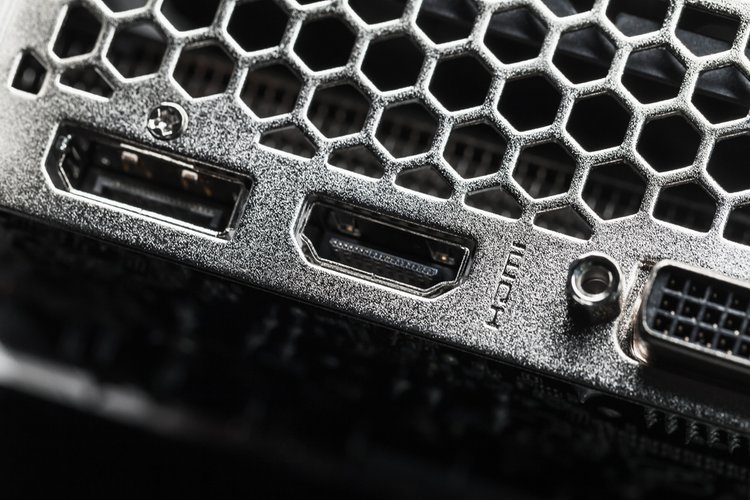
If your wall-mounted TV’s HDMI ports are on the back of the unit, you may need to dismount it. TV’s can be surprisingly heavy, so please take care when removing your TV from its mount, and don’t hesitate to ask for a helping hand.
Use a flashlight so you can see the inside of the HDMI port clearly. You should see a horizontal pin. Is it straight or curved and bent? Or is it missing completely?
In rare cases, the HDMI port could have been pushed back into your TV’s frame, leaving an empty slot.
If you see any of these problems, you may need to try plugging your HDMI cable into another HDMI port. If there are no more available HDMI ports on your TV, consider getting the port fixed by a TV technician.
3. Your Output Device is Unresponsive
Does your screen display a “No Signal” message when you plug your input source into it? Does it stay black?
Faulty HDMI cables and ports often can not transmit your input source’s signal, leaving your TV unresponsive to its input.
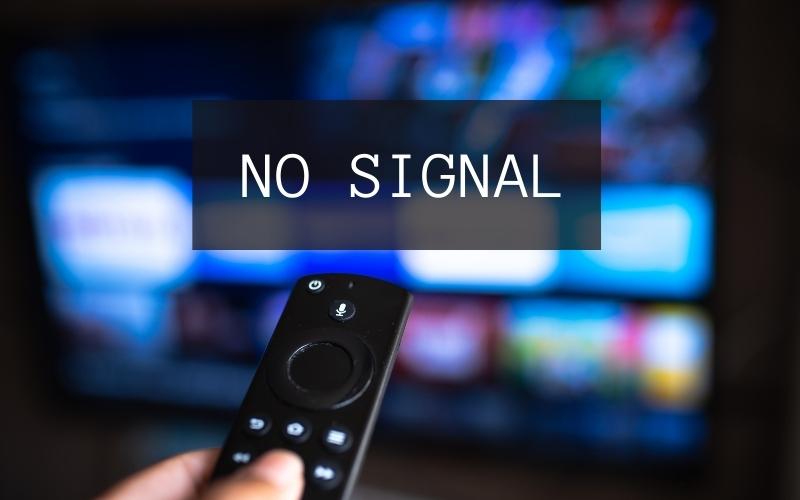
If this is happening to you, check that your laptop, Playstation, Xbox, streaming stick, etc., is properly plugged into your TV. Ensure both ends of the cable are properly secured in the correct ports, and that your input device and TV are turned on.
If all of your hardware is correctly set up, turn your attention to your TV’s input source. Press Input on your remote or your TV’s control panel.
Theoretically, you should see your input source’s screen appear on the HDMI 1, 2, etc. input, however, these inputs can be improperly labeled. So, we recommend browsing all of your TV’s available inputs to see if any of them are displaying your input source.
Wait a few seconds after each time you change the input, as it could take a while for the input source to pop up on-screen.
If none of the inputs yield a result, then your HDMI cable or port may be to blame.
4. Inconsistent Picture and/or Sound
You think that you finally got your HDMI cable to work when, after only a few seconds of screen time the picture cuts out. You head over to your TV to see what the problem is when the picture pop-ups back on-screen.
Much to your dismay, the same thing is happening to the sound and you only manage to catch every fifth word that the characters are saying.
You may also find that when the sound cuts off on your TV, you can hear it from your laptop’s speakers.
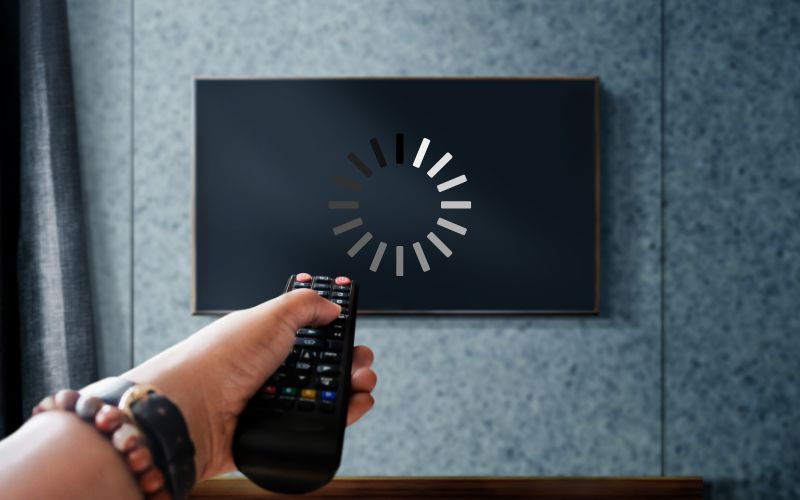
The interruptions are accompanied by a record-scratching sound coming from your TV.
First, check that you’re not accidentally sitting on your remote and pressing any buttons, such as the mute button, which could cause your TV to display similar problems.
Also check that there isn’t something wrong with the content you’re playing, especially if you’ve downloaded it from an untrustworthy source. The video file could be corrupt or contain video/audio problems.
If you’re streaming content, check that the video isn’t buffering as a result of a slow internet connection.
Once you’ve confirmed there isn’t a problem with your video, it’s time to get a new HDMI cable or check out your TV’s HDMI port.
5. The Picture is Discoloured and/or Unclear
Faulty HDMI cables and ports can cause a host of picture problems.
Your TV’s picture may be discolored, with bright or dark spots of color on-screen. These spots could be static or move around the screen, constantly changing shape and size.
Your TV picture might also be tinted a bright color or you may find that it looks like you’ve put a funky filter on it. This phenomenon is called solarization, and while it can be a result of a faulty TV screen, it also happens when you’re using a broken HDMI cable or port.

You may also find that the picture is helplessly blurry or that the video displayed is of a very low resolution.
It’s advised to check which resolution your TV is set to, as it could be set to a low resolution, making the video appear fuzzy.
Bear in mind that this can also happen when you’re streaming content with low bandwidth, so see how the video looks on your laptop and compare it to the picture on the TV screen.
If both videos are blurry, then your internet connection may be slow or unstable, resulting in a low-resolution video. If the video appears clear on your laptop, but blurry on your TV, you may need a new HDMI cable.
6. The Remote and HDMI CEC Function isn’t Working
Do you find that you can’t control your input source’s volume with your remote? Are you struggling to use a universal remote for your input device, like your Fire Stick?
If so, there could be something wrong with your HDMI cable or port that is “blocking” the remote’s commands.
Using your remote for your HDMI input requires the TV to support HDMI CEC. So, if the port’s faulty, this feature could malfunction.
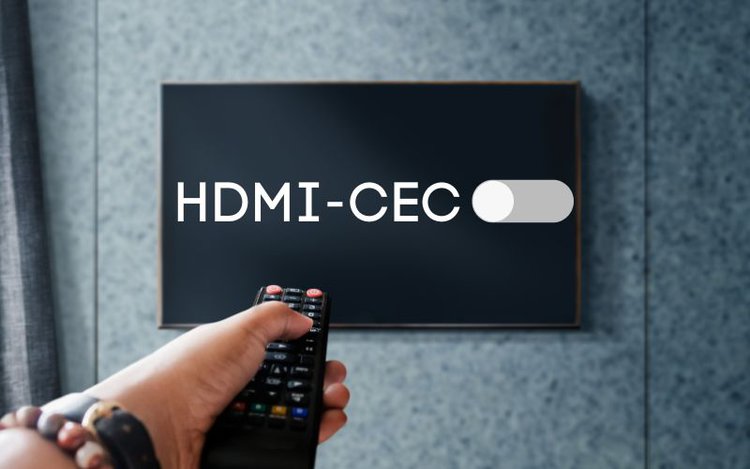
It’s also possible that the HDMI cable or port cannot “accept” the remote’s commands if they’re too broken to carry signals from one device to another.
Before you go shopping for a new HDMI cable, check that your remote has new batteries or is fully charged. If your remote uses infrared technology, ensure your TV’s infrared sensor is not being blocked.
You can also try standing closer to your TV to see if it’s able to receive your remote’s commands at a shorter distance.
There may also be something wrong with your TV’s infrared sensor, so closely inspect it for any signs of damage.
Alternatively, there could be something wrong with your TV’s HDMI ARC/eARC. Turning your TV off and on again will reboot this feature, hopefully resolving the issue.
If all appears well, then it’s likely that your HDMI cable or port is faulty.
7. No Sound and/or Picture
Can you hear all of your movie’s audio but find yourself staring at a black screen? Or do you find yourself watching your movie in silence?
No sound or no picture is a clear symptom of a faulty HDMI cable or port.

But to be sure that the cable/port is the problem, ensure your TV’s audio is turned up and check that it’s not playing audio to another audio source, like headphones or speakers.
If your TV is connected to speakers, ensure they’re turned on and properly connected. Also, check that their volume is turned up.
If your TV has adjustable brightness, ensure it has not been turned all the way down, making the screen appear off.
You may also want to check that the volume within the streaming app is not set to mute and that there isn’t a problem with the video file’s audio.
8. Cable Does Not Seamlessly Fit into Port
Are you having trouble plugging your HDMI cable into the port? Do you have to apply a considerable amount of pressure to plug one into the other?
If so, either the cable or port could be faulty and misshapen. HDMI cables do not have locking mechanisms, making them easy to plug in and unplug.
So, if you’re struggling to insert the cable into the port, ensure that there’s nothing lodged inside the port or in the cable’s pinhole.
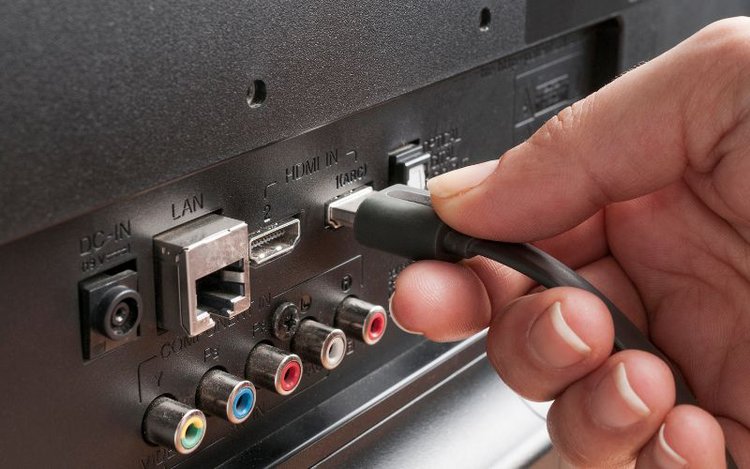
It’s a good idea to clean your HDMI port if you notice any debris inside of it. You can do this using compressed air or isopropyl alcohol and Q-tips.
Now is also a good time to double-check that you’re plugging the correct cable into the correct port.
You may also want to check that the HDMI cable hasn’t been misshapen by the manufacturer. While manufacturers do have quality control procedures, it’s not uncommon for faulty or misshapen cables or ports to slip past.
These cables or ports may be the wrong shape or have misshapen/missing pins.
If your new TV’s HDMI port is misshapen, we suggest consulting your warranty policy to see if the manufacturer will replace or repair the faulty cable/port for you.
9. The Cable Cannot Maintain a Steady Connection
Do you have to twist and turn the HDMI cable to connect it to the TV port? Does it disconnect as soon as you stop putting pressure on the cable’s connector?
Faulty HDMI cables tend to have connectivity problems, struggling to deliver video and audio signals from the input source. You may find yourself having to tape the cable’s connector in place so it stays put, or twist the cable a certain way every time you want to watch a movie.
Plug the cable into another one of your TV’s HDMI ports to see if you experience the same problem. If you do, then your cable may be broken and in need of replacement.
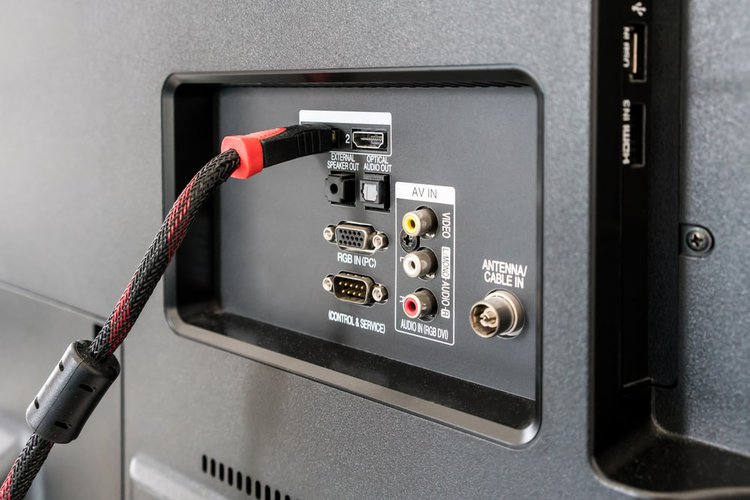
If the cable works seamlessly on another port, your TV’s HDMI port may be the problem.
If you’re using an HDMI converter, ensure the converter is plugged into power if needed. Some converters cannot carry signals if they are not properly connected to a stable power source.
10. Your TV and/or Cable is Old
HDMI ports and cables are delicate pieces of hardware and tend to stop working after several years of use.
So if your TV or HDMI cable is particularly old, you may need to replace them.
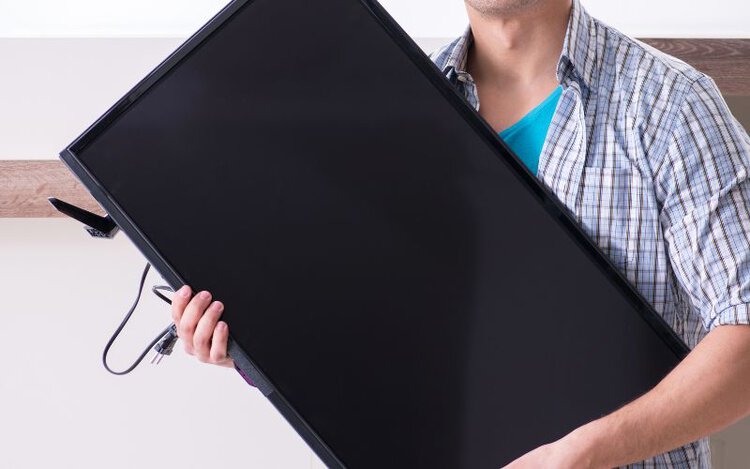
If your TV’s HDMI ports are the problem, try using an HDMI converter to connect your HDMI cable to another one of your TV’s ports. These converters are easy to use and are usually reasonably priced.
For instance, you can use an HDMI to RCA Converter or an HDMI to SCART converter (I have this one at home and it works like a charm).
This may buy your TV some extra time until you can afford a new model.
You can also keep an extra HDMI cable around your home, just in case your current one starts demonstrating connectivity problems or stops working altogether. The Amazon Basics High-Speed HDMI Cable comes highly recommended by our team.
- IN THE BOX: Nylon braided HDMI cable (A Male to A Male) for connecting 2 HDMI-enabled devices; 15...
- DEVICE COMPATIBLE: Connects Blu-ray players, Fire TV, Apple TV, PS4, PS3, Xbox One, Xbox 360, and...
- SUPPORTS 4K VIDEO: Supports 4K video at 60 Hz, 2160p, 48-bit/px color depth, as well as bandwidth up...
(Paid Link.)
Good luck!
Yesenia Achlim is a technical copywriter and editor with a focus on AV equipment. She aims to break down complicated topics and make technology accessible, no matter your technical expertise. When she’s not teaching you how to replace a projector lamp, you can find her reading and baking.


